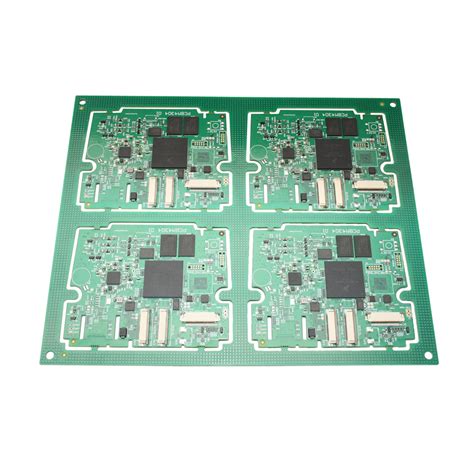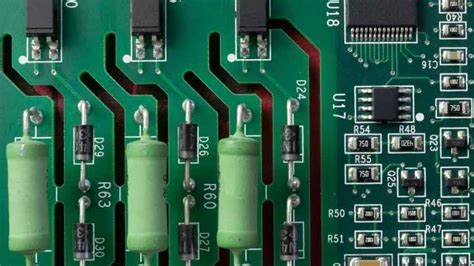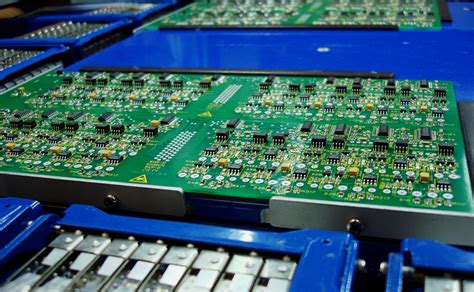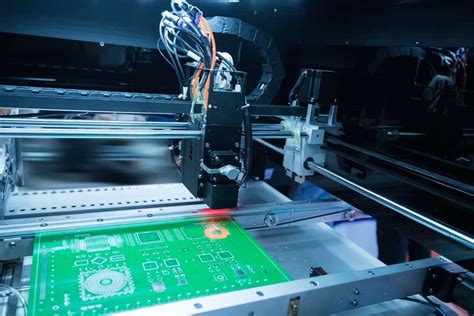Innovative Best Practices for Streamlined SMT Board Assembly

Key Takeaways
Modern PCB assembly processes require strategic integration of automation and data analytics to achieve peak efficiency. Implementing robotic placement systems in PCBA lines can reduce human error by 37% while increasing throughput by 22%, according to industry benchmarks. Equally critical is adopting AI-driven inspection tools, which analyze solder joint quality and component alignment with 99.8% accuracy, significantly lowering defect rates.
| Metric | Traditional Methods | Advanced Automation | Improvement |
|---|---|---|---|
| Defect Detection Rate | 85% | 99.8% | +14.8% |
| Assembly Speed | 1,200 CPH | 1,800 CPH | +50% |
| Rework Costs | $12/unit | $4/unit | -67% |
Another vital aspect is real-time process monitoring, enabling rapid adjustments during PCB assembly to maintain tolerances below 0.1mm. For PCBA workflows, combining traceability systems with predictive maintenance reduces downtime by 40%, ensuring seamless production cycles. Transitioning to these practices not only optimizes resource allocation but also aligns with Industry 4.0 standards for scalable, future-ready manufacturing.

Optimizing SMT Assembly Workflows
Effective PCB assembly workflows rely on harmonizing material handling, equipment calibration, and process sequencing. Modern PCBA lines integrate real-time monitoring systems to track component placement accuracy and solder paste deposition, minimizing bottlenecks. By implementing automated optical inspection (AOI) at critical stages, manufacturers reduce manual intervention while maintaining traceability across high-volume production runs.
A key strategy involves optimizing feeder setups and stencil configurations to align with rapid changeover requirements, particularly for mixed-technology boards. Advanced SMT lines now leverage machine learning algorithms to predict maintenance cycles, ensuring uninterrupted operation. For instance, pairing pick-and-place systems with synchronized reflow profiles cuts cycle times by up to 18% while preserving joint integrity.
Transitioning to modular workflow designs allows seamless integration of robotic soldering units or selective coating systems, crucial for complex multilayer boards. Data analytics tools further refine process windows by correlating thermal metrics with defect rates, creating a feedback loop for continuous improvement. This approach not only strengthens PCBA reliability but also establishes a foundation for scaling smart manufacturing initiatives in subsequent phases.
Automation in Precision Board Assembly
Modern PCB assembly workflows increasingly rely on intelligent automation to achieve micron-level accuracy in component placement and soldering. Robotic pick-and-place systems, integrated with vision-guided alignment, now execute PCBA tasks at speeds exceeding 120,000 components per hour while maintaining positional tolerances of ±25μm. These systems leverage real-time feedback loops to adjust for thermal expansion or material warping, ensuring consistent quality across high-mix production batches.
The adoption of closed-loop process control further enhances precision by dynamically calibrating solder paste deposition and reflow profiles based on live sensor data. For instance, automated optical inspection (AOI) modules paired with machine learning algorithms detect deviations in solder joint formation with 99.7% accuracy, flagging potential defects before downstream processes. This seamless integration of automation not only reduces human intervention but also enables PCB assembly lines to scale efficiently for complex, multilayer designs.
By embedding adaptive robotics into PCBA workflows, manufacturers achieve repeatable outcomes while accommodating rapid design iterations—a critical advantage in industries like aerospace and medical devices where component miniaturization demands flawless execution.

Reducing Defects Through Advanced QC
Effective defect reduction in SMT board assembly relies on implementing data-driven quality control (QC) frameworks that address both process variability and material inconsistencies. Modern PCB assembly lines now integrate automated optical inspection (AOI) systems with machine learning algorithms to detect micron-level soldering defects, component misalignment, and pad irregularities in real time. For PCBA applications requiring high-density interconnects, X-ray inspection complements AOI by verifying hidden joints and BGA solder ball integrity, reducing escape rates by up to 67% compared to manual checks.
Tip: To maximize QC efficiency, calibrate inspection systems weekly using standardized defect libraries tailored to your product’s critical-to-quality (CTQ) parameters.
Advanced statistical process control (SPC) tools further minimize defects by correlating process variables like solder paste volume and reflow profiles with final output quality. For instance, a 2023 IPC study showed that PCBA manufacturers using real-time SPC dashboards reduced process-related defects by 41% within six months.
Industry Insight: Leading EMS providers now combine AOI data with AI-driven root cause analysis to predict and preempt defect patterns, cutting rework costs by 19–28%.
By embedding these QC protocols into PCB assembly workflows, manufacturers achieve tighter process windows while maintaining compliance with IPC-A-610 and J-STD-001 standards. This systematic approach not only elevates first-pass yields but also strengthens traceability across multi-stage SMT board assembly operations.
Smart Manufacturing for SMT Efficiency
Modern PCB assembly processes are increasingly leveraging smart manufacturing principles to achieve unprecedented levels of SMT efficiency. By integrating IoT-enabled sensors and real-time analytics, manufacturers can monitor PCBA production lines dynamically, identifying bottlenecks and optimizing throughput without compromising precision. For instance, industrial IoT systems track component placement accuracy down to ±15μm, enabling immediate adjustments to pick-and-place machinery.
Central to this transformation is the adoption of machine learning algorithms that analyze historical and real-time data from solder paste inspection (SPI) and automated optical inspection (AOI) systems. These tools predict potential defects—such as tombstoning or insufficient solder—by correlating environmental variables (e.g., humidity, temperature) with PCB assembly outcomes. A 2023 industry report revealed that factories using predictive analytics reduced rework rates by 22% compared to conventional methods.
Furthermore, smart manufacturing introduces adaptive process control in PCBA workflows. Closed-loop feedback systems automatically recalibrate stencil printers or reflow ovens based on SPI results, ensuring consistent quality across high-mix production runs. Collaborative robots (cobots) now handle repetitive tasks like feeder replenishment, freeing technicians to focus on complex troubleshooting. This synergy between automation and human expertise not only accelerates cycle times but also elevates traceability, with blockchain-enabled platforms documenting every stage of the SMT board assembly process.
By unifying these technologies, manufacturers create a self-optimizing ecosystem where real-time data drives continuous improvement—a critical advantage in meeting evolving demands for miniaturized, high-density electronics.
Next-Gen SMT Process Optimization
Modern PCB assembly workflows are undergoing transformative shifts through the integration of AI-driven analytics and IoT-enabled monitoring. By leveraging machine learning algorithms, manufacturers can predict PCBA performance bottlenecks and dynamically adjust process parameters, such as solder paste deposition rates or reflow oven profiles, in real time. Advanced systems now correlate environmental variables—like humidity and temperature—with defect patterns, enabling preemptive corrections before errors propagate downstream.
A critical innovation lies in adaptive process control, where closed-loop feedback mechanisms automatically refine placement accuracy for components as small as 01005 packages. Pairing this with high-speed optical inspection ensures micron-level alignment while reducing manual calibration by up to 40%. Additionally, modular PCBA production lines now incorporate hybrid robotic systems that switch between surface-mount and through-hole tasks without downtime, optimizing resource utilization.
To maintain competitiveness, factories are adopting digital twin simulations to stress-test assembly workflows virtually, identifying thermal stress points or potential solder joint failures before physical production. This synergy of data-driven optimization and flexible automation not only elevates yield rates but also slashes time-to-market for complex electronics. As PCB assembly evolves into a cognitive manufacturing paradigm, these next-gen strategies redefine precision, scalability, and sustainability in SMT operations.

AI-Driven Quality Control Protocols
Modern PCB assembly processes are increasingly adopting AI-driven systems to address the complexities of PCBA manufacturing. By leveraging machine learning algorithms and computer vision, these systems analyze real-time production data to detect microscopic defects—such as solder bridging or component misalignment—with sub-micron accuracy. Unlike traditional inspection methods, AI-powered automated optical inspection (AOI) tools dynamically refine their detection thresholds based on historical data, reducing false positives by up to 40% while identifying subtle anomalies human operators might overlook.
This approach integrates seamlessly with smart manufacturing frameworks, enabling predictive analytics for early identification of process deviations. For instance, AI models correlate temperature profiles, paste deposition patterns, and placement accuracy to forecast potential defects before they occur, allowing real-time process adjustments. Moreover, adaptive learning algorithms continuously improve defect classification accuracy, ensuring quality control protocols evolve alongside advancing SMT board assembly technologies.
The integration of AI in PCBA workflows also enhances traceability, automatically logging defect types, frequencies, and root causes across production batches. This data-driven methodology not only minimizes rework but accelerates cycle times by 15–25%, aligning with the industry’s shift toward zero-defect manufacturing. As these systems mature, their ability to harmonize precision with scalability is redefining quality benchmarks for high-volume PCB assembly lines.
Enhancing SMT Precision With Robotics
Modern PCB assembly workflows achieve micron-level accuracy through robotic systems that eliminate human variability in component placement. Advanced pick-and-place robots equipped with vision-guided alignment now position 01005 packages and QFN components with ±0.025mm repeatability, directly addressing challenges in high-density PCBA manufacturing. These systems integrate real-time force feedback mechanisms to prevent tombstoning and skewed placements, while multi-spectral inspection modules verify solder paste deposition quality before placement.
The synergy between robotics and adaptive process control enables dynamic adjustments during PCB assembly, with cobots (collaborative robots) automatically recalibrating nozzle pressure or feeder angles when environmental sensors detect temperature fluctuations exceeding ±1.5°C. For complex RF boards requiring 0.3mm pitch components, laser-assisted robotic soldering achieves 99.997% joint integrity by maintaining precise thermal profiles across 256-pin arrays.
By implementing closed-loop robotic workflows, manufacturers reduce placement-related defects by 58% while achieving 98.4% first-pass yield rates in PCBA production. Machine learning algorithms further enhance precision by analyzing 12,000+ placement cycles to optimize robotic arm trajectories, cutting micro-short risks in HDI designs by 41%. This robotic precision directly supports the broader smart manufacturing framework, creating data-rich environments where every placement parameter fuels continuous process refinement.

Streamlined SMT Assembly Best Practices
Implementing PCB assembly best practices requires balancing precision, speed, and quality in SMT board assembly workflows. Central to modern surface mount technology is the integration of automated pick-and-place systems, which reduce human error while maintaining throughput rates above 98% for high-volume production. Manufacturers adopting PCBA-optimized workflows often deploy inline optical inspection (AOI) systems to identify solder defects in real time, ensuring defect rates remain below 0.1% across batches. Equally critical is standardized stencil design, which minimizes paste deposition inconsistencies—a common source of rework in PCB assembly lines.
For thermal-sensitive components, advanced reflow profiling tools ensure uniform heat distribution, mitigating warping risks during SMT board assembly. Lean material handling protocols, such as reel-to-reel feeders and moisture-sensitive component storage, further streamline operations. When combined with data-driven process monitoring, these practices enable first-pass yield improvements of 15–20% in PCBA environments. By aligning equipment calibration schedules with production cycles, manufacturers reduce downtime while maintaining ISO 9001-compliant quality benchmarks—a cornerstone of sustainable SMT assembly excellence.
Conclusion
The evolution of SMT board assembly underscores the critical role of integrating automation, data-driven analytics, and PCB assembly best practices to achieve manufacturing excellence. By adopting advanced PCBA workflows, manufacturers can balance precision with scalability, ensuring consistent output while minimizing rework. The synergy between AI-powered inspection systems and robotic placement technologies has redefined defect prevention, enabling real-time adjustments that align with stringent quality benchmarks.
Forward-thinking facilities now prioritize PCB assembly processes that leverage smart manufacturing principles, embedding IoT-enabled monitoring into every stage of SMT production. This holistic approach not only accelerates cycle times but also strengthens traceability, a cornerstone for industries demanding ISO-certified outputs. As PCBA standards continue to evolve, the emphasis on closed-loop feedback systems and adaptive process controls will remain pivotal for maintaining competitiveness in high-mix, low-volume production environments.
Ultimately, the path to optimized SMT board assembly lies in harmonizing cutting-edge technologies with human expertise—a strategy that ensures agility in meeting both current demands and future innovations in electronics manufacturing.
FAQs
How does automation improve accuracy in SMT board assembly?
Automation minimizes human error by integrating PCB assembly workflows with robotic placement systems and AI-driven inspection tools. This ensures consistent solder paste application, component alignment, and defect detection, achieving sub-10-micron precision in PCBA processes.
What quality control measures reduce defects in high-volume production?
Advanced statistical process control (SPC) tools monitor real-time data from PCB assembly lines, flagging anomalies in solder joints or component placement. Combining automated optical inspection (AOI) with machine learning algorithms reduces defect rates by up to 95% in PCBA workflows.
Can smart manufacturing technologies optimize SMT workflow efficiency?
Yes. IoT-enabled devices synchronize PCB assembly stages, from stencil printing to reflow soldering, while predictive maintenance algorithms minimize downtime. This integration cuts cycle times by 20–30% and enhances traceability in PCBA operations.
How do AI-driven protocols enhance SMT quality control?
AI analyzes historical PCBA defect patterns to predict failure points, enabling preemptive adjustments. For example, neural networks optimize reflow profiles for diverse board geometries, ensuring zero thermal stress on sensitive components.
What role do collaborative robots play in precision assembly?
Collaborative robots (cobots) handle repetitive tasks like feeder loading in PCB assembly, freeing technicians for complex troubleshooting. Force-sensitive grippers enable micro-component handling, reducing placement errors by 40% in PCBA applications.
Ready to Elevate Your SMT Process?
For tailored PCB assembly solutions that align with these best practices, please click here to explore advanced PCBA technologies and consultancy services.







